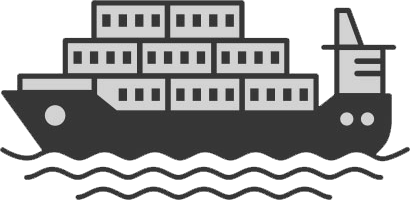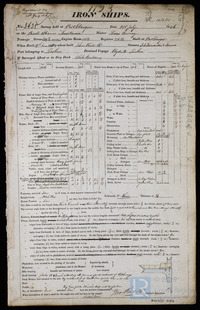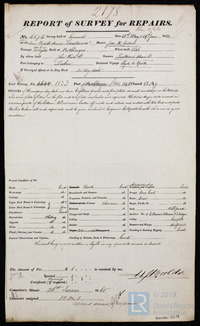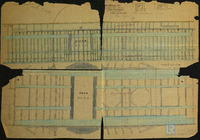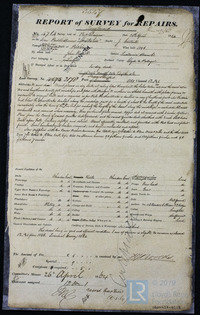- Related documents Related
- Complete documents list Documents
- Report ship? Report?
Use the data export button to extract customised data sets from the Ship Plan and Survey Report Collection. Available in TSV and CSV formats.
Name of ship as recorded on the record
The process of transferring a vessel to water, but not necessarily her completion.
The port or place in which the vessel’s construction took place, at the time of writing.
The listed port to which a given vessel belongs.
An officially licensed mariner (post 1850) holding ultimate command and responsibility for a vessel.
Master
Louis Burney ( Iron Ships Report for Lusitania, 21st July 1856 1856 )
Jose X Contente ( Report of Survey for Repairs for Lusitania, 19th June 1860 1860 )
J Contente ( Report of Survey for Repairs for Lusitania, 20th April 1864 1864 )
Location where a vessel’s survey was undertaken.
Location of Survey
Port Glasgow; Greenock ( Iron Ships Report for Lusitania, 21st July 1856 1856, Report of Survey for Repairs for Lusitania, 20th April 1864 1864 )
Greenock ( Report of Survey for Repairs for Lusitania, 19th June 1860 1860 )
Port Glasgow ( Deck Plan for Lusitania, 1863 1863 )
Recorded information related to a vessel’s movements.
Voyage information
Port Glasgow; Clyde; Lisbon ( Iron Ships Report for Lusitania, 21st July 1856 1856 )
Greenock; Clyde; Oporto ( Report of Survey for Repairs for Lusitania, 19th June 1860 1860 )
Port Glasgow; Clyde; Portugal ( Report of Survey for Repairs for Lusitania, 20th April 1864 1864 )
A vessel’s means of propulsion.
Is the steamer assisted by sail?
Confirmation as to whether the vessel was equipped with refrigeration machinery to aid in the transport of frozen or chilled cargo/goods.
Refrigeration machinery fitted for cargo purposes?
No ( Iron Ships Report for Lusitania, 21st July 1856 1856, Report of Survey for Repairs for Lusitania, 19th June 1860 1860, Deck Plan for Lusitania, 1863 1863, Report of Survey for Repairs for Lusitania, 20th April 1864 1864 )
Does the vessel possess an auxiliary power source?
Is electric lighting fitted to the vessel?
Broad categories and subdivisions of vessels related to their purpose or function.
Ship type
undefined ( Deck Plan for Lusitania, 1863 1863 )
The year in which a vessel’s construction is completed.
The individual and/or organisation listed as having been responsible for constructing the vessel. This can/may be the same as the owner and/or manager.
Abbreviations of the names of ports with Lloyd’s Register survey offices.
The individual and/or organisation listed
Ship owner
J J Fernandes & Irmaos ( Iron Ships Report for Lusitania, 21st July 1856 1856 )
Lusitania Steam Co ( Report of Survey for Repairs for Lusitania, 19th June 1860 1860, Report of Survey for Repairs for Lusitania, 20th April 1864 1864 )
Name of surveyor.
Surveyor
Thomas Congdon ( Iron Ships Report for Lusitania, 21st July 1856 1856 )
Henry J Boolds ( Report of Survey for Repairs for Lusitania, 19th June 1860 1860, Report of Survey for Repairs for Lusitania, 20th April 1864 1864 )
Classification symbol assigned to a vessel by Lloyd’s Register’s Classing Committee denoting the quality of construction and maintenance.
Classification
12A1; Built of Iron; MC ( Iron Ships Report for Lusitania, 21st July 1856 1856 )
12A1; record damage repair ( Report of Survey for Repairs for Lusitania, 19th June 1860 1860 )
12 A1; Record lengthened ( Report of Survey for Repairs for Lusitania, 20th April 1864 1864 )
The name of the port/place of destination given.
Destined voyage
Lisbon ( Iron Ships Report for Lusitania, 21st July 1856 1856 )
Oporto ( Report of Survey for Repairs for Lusitania, 19th June 1860 1860 )
Clyde; Portugal ( Report of Survey for Repairs for Lusitania, 20th April 1864 1864 )
Predominant material(s) utilised in a vessel’s construction.
A ship’s total internal volume in ‘register tons’ (replaced by gross tonnage post 1982).
Is machinery fitted at the aft of the vessel?
Generally a smaller additional auxiliary boiler (often used while the vessel is at port).
Name of the Proving House responsible for the public testing and certification of a vessel’s anchors and/or chain cables.
Report an issue with this ship
Have you noticed missing or incorrect data or images for this ship?
Please let us know and we will rectify the issue as soon as possible.
